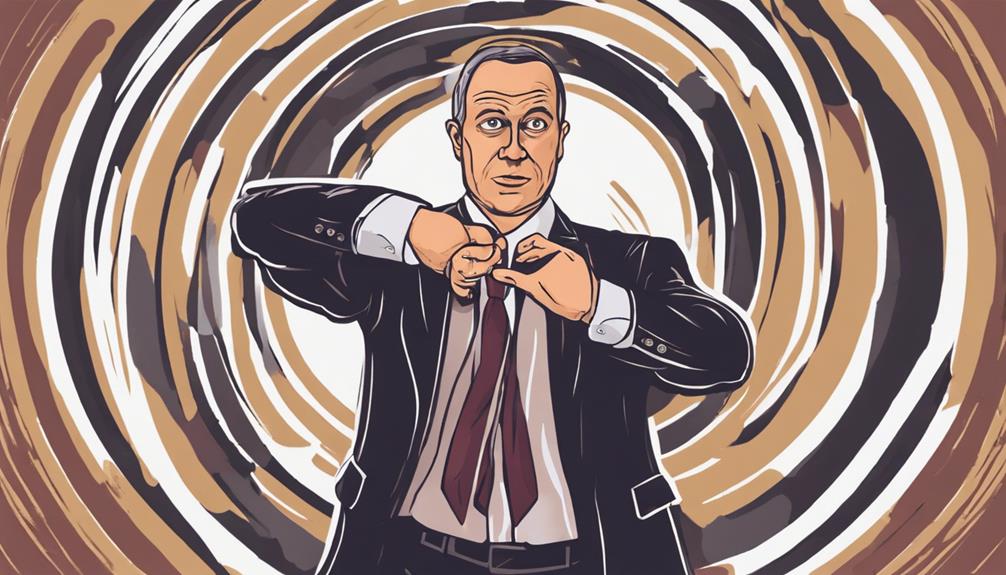web wind
self hypnosis

yoga
Hypnosis is a Pure tie-in to yoga to the fact It Will help you to achieve deeper levels of Comfort Throughout your yoga practice,

meditation
Meditation has been around for thousands of years, as has self-hypnosis, as a tool for deep relaxation, clearing the mind and achieving a state of inner peace.
Self Hypnosis for Self Healing
There are plenty of myths about hypnosis due to what we see on point, somebody eating an onion believing it is an apple, or blanking out and losing management.With self-hypnosis, you’re constantly. And you may use your brain to browse your own ideas and feelings and create results in your own life. Self Hypnosis provides you the resources to utilize engage your emotional power and energy up your daily life, health, success, and happiness.
one week free trial
HELLO! I’M BERIYA SATTA
about me
d.o.b
883 McDowell Street
Nashville, TN 37211
residence
883 McDowell Street
Nashville, TN 37211
specialities
Teaching Yoga and Hypnosis
Mindfulness to Young People
experience
HYPNOSIS INSTRUCTOR
883 McDowell Street
Nashville, TN 37211
MEDITATION GURU
883 McDowell Street
Nashville, TN 37211
YOGA INSTRUCTOR
883 McDowell Street
Nashville, TN 37211

JOIN US FOR A FREE 1-WEEK TRIAL
We are 100% sure that you will experience a better lifestyle with our courses.
happy customers

Merry Satta
Your Website is a valuable and comprehensive resource for Everybody but Particularly for Hypnotherapists, for Example, myself just starting out in this Excellent profession.

Jhone Smith
Fantastic support!!!! Thank you for the instantaneous (and informative!) help.

Beriya Satta
I wish to thank you for your warm welcome. I’m rather enthusiastic about this new find! I’m only about a year for a hypnotist and had been trying to branch out a little bit from weight reduction and smoking. This is an Excellent new start for me.
working hours
Monday – Friday8.00AM – 10.00PM
Saturday11.00AM – 10.00PM
SundayClosed
Latest Post
Best Subliminal Messages For Absolute Mind Power — Let Your Inner Genius Out
Each man or woman is born with the capacity to be a genius. After all, we’re all created with the same kind of brain. But the sad reality is that the genius of us are known to use more than 10% of the brain. So can you just imagine the power that lies within your hands when you release the organ that controls your body’s ability? Even if we start using 20 percent of our mental ability, all our accomplishments and abilities would double.
If you know you have got such power hiding inside you, are you going to sit and waste it? Of course not! You should spend time opening that door so that your genius will come out. Here are five tips on how to do that.
1. Visualize your potential. It’s always good to begin with a goal in mind. This makes the challenge more real. You know that you are really working for something that’s possible and within your reach, so you get motivated. The best way is to visualize yourself reaching the maximum level of your skills. Imagine yourself with confidence, acing through all your challenges, and facing tasks at your best. Imagine yourself calculating mathematics and logic problems.
2. Break down your old habits. Concentrate on your visualized goals and allow them to replace the habits of your mind. The mind is full such as those from people. You have to free the spaces in your mind so the goals that are positive can take centre stage.
3. Make it happen. Once you see what you want inside your mind, you need to make it happen. Don’t let the possibility of your genius potential remain a dream. And you can make it happen easily with the support of messages.
Listening to messages or watching videos can help cultivate your subconscious and make it a fertile ground for positive thoughts. Stimulate your self hypnosis mind and shape your thought patterns that are present into how you want them to be. Focus on thoughts like:
I am powerful.
I have potential.
My power is being tapped into by me.
I imagine myself success.
I have genius potential.
The subconscious can recognize subliminal messages and consume them without filtering them out. So the thoughts that disturb and distract the conscious mind will not affect.
These messages are just so powerful that they can also help you get rid of the ideas that still linger in your brain.
4. Invest in a genius subliminal DVD. You may get strong subliminal reinforcement by viewing. Just you can fill your mind to wake with the subliminal messages.
5. Strive. It’s okay to sit back and see a DVD that is subliminal in your spare time, but when you are working or facing your challenges, you also have to strive and really work hard. If you try hard enough, your brain will not feel dulled and the challenge is what’s going to motivate it to go beyond its usual abilities.
Optimizing Hypnosis Inductions for Therapy: Top Tips
Optimizing hypnosis inductions for therapy involves a strategic mix of techniques. Progressive Muscle Relaxation aids in deep relaxation and suggestibility. Engaging Imagery helps create a rich internal experience. Rapid Hypnosis Techniques swiftly guide clients into trance. NLP Strategies enhance communication for profound change. Customized approaches tailored to client needs foster successful outcomes. Mastering these elements can elevate the effectiveness of hypnosis sessions.
Utilizing Progressive Muscle Relaxation

Progressive muscle relaxation is a widely utilized technique in hypnosis inductions for therapy, helping clients achieve a state of deep relaxation and heightened suggestibility. This method involves systematically tensing and then relaxing muscle groups throughout the body, promoting a sense of calm and reducing physical tension.
Incorporating deep breathing techniques along with body scanning during this process can enhance the relaxation response further. Deep breathing helps to oxygenate the body, promoting a sense of tranquility and aiding in the release of tension. Body scanning involves focusing on each part of the body sequentially, bringing awareness to any areas of tightness or discomfort and allowing for intentional relaxation.
Engaging Imagery and Visualization
Within hypnosis inductions for therapy, engaging imagery and visualization techniques play a crucial role in creating a rich internal landscape for clients to explore and enhance therapeutic outcomes.
Creative visualization involves guiding clients to create vivid mental images that evoke emotions and sensations. Through imaginative journeys, clients can explore their inner world, uncovering insights and fostering personal growth.
By incorporating sensory exploration, therapists can deepen the hypnotic experience, allowing clients to connect with their emotions and memories on a profound level.
When utilizing engaging imagery and visualization techniques during hypnosis, therapists aim to enhance clients' receptivity to suggestions and promote relaxation and focus. Clients can be guided to visualize themselves overcoming challenges or achieving their goals, empowering them to make positive changes in their lives.
Implementing Rapid Hypnosis Techniques

Effective implementation of rapid hypnosis techniques involves skillfully guiding clients into a deep state of trance in a condensed timeframe, optimizing therapeutic interventions for efficient and impactful outcomes.
Instant inductions, a key component of rapid hypnosis, are characterized by swift hypnotic inductions that quickly transition clients into a trance state. These techniques often rely on non-verbal cues such as hand movements or eye fixation to induce rapid relaxation and focus.
To deepen the hypnotic experience during rapid inductions, pacing techniques can be utilized. Pacing involves matching the client's behavior and breathing patterns to establish rapport and create a seamless transition into hypnosis. By synchronizing with the client's rhythm, the hypnotist can deepen the trance state more effectively, enhancing receptivity to therapeutic suggestions.
Mastering rapid hypnosis techniques requires practice, precision, and sensitivity to individual client responses. When executed proficiently, these methods can facilitate swift access to the subconscious mind, enabling targeted therapeutic interventions to yield profound and lasting benefits for clients.
Incorporating NLP Strategies
Utilizing Neuro-Linguistic Programming (NLP) strategies in hypnosis therapy can enhance communication effectiveness and facilitate more profound therapeutic outcomes for clients. Incorporating anchoring techniques and building rapport are fundamental aspects of NLP that can significantly impact the hypnosis process.
Anchoring involves associating a specific stimulus with a particular emotional state, enabling the therapist to trigger desired responses in clients during hypnosis sessions. By establishing positive anchors, therapists can help clients access resourceful states and reinforce positive changes.
Language patterns play a crucial role in NLP strategies within hypnosis inductions. By utilizing language patterns that resonate with the client's subconscious mind, therapists can enhance the effectiveness of suggestions and promote deeper levels of trance.
Sensory acuity, another key element of NLP, allows therapists to observe subtle non-verbal cues and tailor their approach to suit the client's unique communication style.
Incorporating NLP strategies such as anchoring, building rapport, utilizing language patterns, and enhancing sensory acuity can enrich the therapeutic experience and promote more profound transformations in clients undergoing hypnosis therapy.
Customizing Inductions for Client Needs

To tailor hypnosis inductions effectively to meet the specific needs of individual clients, therapists must consider a personalized approach that accounts for the unique characteristics and preferences of each individual. Establishing a strong client rapport is essential in customizing hypnosis sessions. Building trust and understanding the client's goals, fears, and motivations can guide the therapist in crafting inductions tailored to the client's needs.
Furthermore, individual preferences play a crucial role in customizing hypnosis inductions. Understanding whether a client responds better to visual, auditory, or kinesthetic suggestions can significantly impact the effectiveness of the induction. Some clients may prefer a direct and authoritative approach, while others may respond better to a softer, more permissive style.
By adapting the induction to align with the client's preferences, therapists can enhance the overall therapeutic experience and increase the likelihood of successful outcomes.
Frequently Asked Questions
Can Hypnosis Help With Overcoming Specific Phobias or Fears?
Hypnosis is a recognized approach for fear management and phobia treatment. Research suggests its effectiveness in helping individuals overcome specific phobias or fears by addressing subconscious patterns. Professional guidance can enhance the benefits of hypnosis for overcoming fears.
Is It Possible to Experience Negative Side Effects From Hypnosis?
When considering hypnosis, ethical considerations are crucial to address potential risks. While misconceptions exist, debunking myths is essential. Negative side effects from hypnosis are rare, with proper training and a client-centered approach mitigating any concerns.
How Long Does It Typically Take to See Results From Hypnotherapy?
The speed of results in hypnotherapy varies based on individual differences and the nature of the issue being addressed. Patients should have realistic expectations, understanding that some may see improvements relatively quickly while others may require more time for significant changes to manifest.
Can Hypnosis Be Effective for Managing Chronic Pain Conditions?
Hypnosis can be effective for managing chronic pain conditions by promoting relaxation, altering perception of pain, and enhancing coping strategies. Research suggests hypnotherapy may offer benefits for individuals seeking alternative approaches to pain management in chronic conditions.
Are There Any Contraindications for Using Hypnosis in Therapy?
When considering hypnosis in therapy, it's essential to assess safety concerns, potential therapeutic benefits, ethical considerations, and patient readiness. Understanding contraindications like psychosis, severe mental disorders, or resistance is crucial for effective treatment planning.
Conclusion
In conclusion, optimizing hypnosis inductions for therapy involves utilizing various techniques such as:
- Progressive muscle relaxation
- Imagery
- Rapid hypnosis
- NLP strategies
- Customization for individual client needs
By incorporating these strategies, therapists can enhance the effectiveness of hypnosis inductions and facilitate positive therapeutic outcomes for their clients.
It is important to tailor the induction process to meet the unique needs and preferences of each client in order to maximize the therapeutic benefits of hypnosis.
Utilizing Social-Cognitive Theories in Hypnosis: A Guide
Utilizing social-cognitive theories in hypnosis provides a structured approach to understanding beliefs, social influences, self-efficacy, observational learning, and cognitive factors. Beliefs greatly shape responses to hypnotic suggestions, while observing others and building self-efficacy can enhance hypnotic success. Social modeling and cognitive mechanisms also play crucial roles in shaping hypnotizability levels. By delving further into these theories, practitioners can optimize therapeutic interventions and improve outcomes for individuals undergoing hypnosis.
Role of Beliefs in Hypnosis

The role of beliefs in hypnosis plays a significant part in shaping individuals' responses to hypnotic suggestions and their overall hypnotic experience. Belief formation is a crucial aspect of hypnotic suggestibility, influencing how receptive individuals are to hypnosis and the extent to which they can experience hypnotic phenomena.
Research has shown that individuals with strong beliefs in the efficacy of hypnosis are more likely to respond positively to hypnotic suggestions and exhibit a greater hypnotic response. Moreover, beliefs can also contribute to attitude change during hypnosis. As individuals engage in hypnosis, their beliefs about themselves, their capabilities, and the hypnotic process can undergo transformation.
This change in attitude can lead to a more profound hypnotic experience and greater responsiveness to hypnotic suggestions. By understanding the role of beliefs in hypnosis, practitioners can tailor their approach to enhance individuals' hypnotic responsiveness and optimize the therapeutic outcomes of hypnosis sessions.
Influence of Social Modeling
An examination of the influence of social modeling on hypnotic suggestibility reveals the significant impact of observing others' responses to hypnosis on an individual's own susceptibility to hypnotic suggestions. Peer influence plays a crucial role in shaping an individual's responsiveness to hypnosis. When individuals witness their peers displaying high levels of suggestibility during a hypnotic session, they may be more inclined to mimic similar behaviors, thereby increasing their own susceptibility to hypnotic suggestions.
Group dynamics also come into play, as the collective behavior of a group undergoing hypnosis can create a social norm that influences each individual's response to suggestions.
Moreover, social norms and conformity play a significant role in the influence of social modeling on hypnotic suggestibility. Individuals may conform to the behaviors and responses of others in a group setting, leading to increased suggestibility as they align their experiences with the perceived norms within the group.
Self-Efficacy in Hypnotic Response

Self-efficacy, as a key psychological construct, plays a pivotal role in determining an individual's responsiveness to hypnotic suggestions. Self-efficacy refers to one's belief in their ability to successfully perform a particular task or achieve desired outcomes. In the context of hypnosis, individuals with higher self-efficacy are more likely to respond positively to hypnotic suggestions and experience greater hypnotic success.
Confidence building techniques can significantly impact an individual's self-efficacy levels in relation to hypnosis. By incorporating techniques such as positive affirmations, visualization exercises, and gradual exposure to hypnotic suggestions, practitioners can help enhance their clients' confidence in their ability to enter a hypnotic state and respond effectively to suggestions.
Moreover, individuals with high performance expectations regarding their hypnotic abilities are more likely to achieve positive outcomes during hypnosis. Setting realistic yet optimistic performance expectations can further boost self-efficacy and contribute to overall hypnotic success.
Observational Learning in Hypnosis
Observational learning, a core component of social-cognitive theories, plays a significant role in shaping individuals' responses to hypnotic suggestions and their overall engagement with the hypnotic process.
Through observation, individuals may acquire new behaviors or responses by witnessing others' experiences during hypnosis. This process can lead to imitation effects, where individuals replicate behaviors or responses they have observed in others during hypnotic sessions.
Mirror neurons, a key component of observational learning, are believed to contribute to individuals' ability to mimic behaviors they witness. In the context of hypnosis, mirror neurons may play a role in the transmission of suggestibility levels from the hypnotist to the individual undergoing hypnosis.
This neural mechanism could explain why some individuals exhibit higher levels of suggestibility during hypnosis after observing others responding in a similar manner.
Understanding the influence of observational learning on hypnotic learning and suggestibility levels is essential for enhancing the effectiveness of hypnotic interventions and tailoring hypnotic techniques to individual needs.
Cognitive Factors in Hypnotizability

Empirical studies have identified various cognitive factors that significantly influence individual differences in hypnotizability levels. Cognitive processing plays a crucial role in determining an individual's susceptibility to hypnosis. Those with high levels of suggestibility tend to respond more effectively to hypnotic suggestions, showcasing a fundamental cognitive factor in hypnotizability.
Furthermore, attentional focus is another key aspect in understanding hypnotic susceptibility. Individuals who can maintain a heightened level of attention and focus during hypnotic induction are more likely to achieve deeper hypnotic states, indicating a strong correlation between attentional focus and hypnotizability.
Research suggests that cognitive factors such as suggestibility and attentional focus interact to shape an individual's responsiveness to hypnosis. By considering these cognitive mechanisms, practitioners can tailor hypnotic interventions to suit the unique cognitive profiles of their clients, ultimately enhancing the effectiveness of hypnotherapy.
Understanding these cognitive factors in hypnotizability provides valuable insights into optimizing the use of hypnosis as a therapeutic tool.
Social-Cognitive Approaches in Practice
In the application of hypnosis, incorporating social-cognitive approaches into practice can offer a comprehensive understanding of how interpersonal dynamics and cognitive processes influence hypnotic experiences.
Group dynamics play a crucial role in hypnosis sessions, as individuals within a group setting may influence each other's responses to suggestions.
Social influence, another key component, highlights how an individual's susceptibility to hypnosis can be shaped by the presence and actions of others.
Understanding these social-cognitive aspects allows practitioners to tailor their approach based on the dynamics present in a given session.
Frequently Asked Questions
Can Hypnosis Be Used to Erase Memories?
Memory manipulation through hypnosis raises ethical concerns due to potential impacts on individuals' autonomy and well-being. The efficacy and ethicality of erasing memories through hypnosis remain debatable, requiring careful consideration of ethical guidelines and psychological implications.
Does Age Affect Hypnotic Susceptibility?
Age can influence hypnotic susceptibility, with older individuals often exhibiting higher suggestibility. Gender differences may also play a role, as well as cultural influences impacting how individuals respond to hypnosis. These factors highlight the complexity of hypnotic responsiveness.
How Long Does a Hypnotic Suggestion Last?
The duration of a hypnotic suggestion's effectiveness varies based on individual hypnotic suggestibility and the presence of hypnotic reinforcement. Factors such as depth of trance, post-hypnotic suggestions, and the suggestibility of the subject contribute to the longevity of hypnotic effects.
Can Self-Hypnosis Be Dangerous?
Self-hypnosis can pose potential risks if practiced without proper knowledge or guidance. It may lead to unintended psychological consequences or false memories. Ethical considerations include ensuring individuals have the capacity to engage in self-hypnosis safely and responsibly.
Are There Risks of Addiction to Hypnosis?
Addiction risks in hypnosis are minimal when conducted by trained professionals. However, excessive reliance on hypnosis can potentially lead to psychological dependency. Long term effects may include decreased self-efficacy and reliance on external sources for coping mechanisms.
Conclusion
In conclusion, the utilization of social-cognitive theories in hypnosis offers valuable insights into the role of beliefs, social modeling, self-efficacy, observational learning, and cognitive factors in hypnotic response.
By integrating these approaches into practice, clinicians can enhance their understanding of hypnotizability and improve the effectiveness of hypnosis interventions.
Further research and application of social-cognitive theories in hypnosis may lead to advancements in the field and better outcomes for individuals seeking hypnotherapy.
take any class at your free time
flexibly for whole month
address
883 McDowell Street, Nashville, TN 37211.
info@webwind.net
contact
1-931-320-8895


